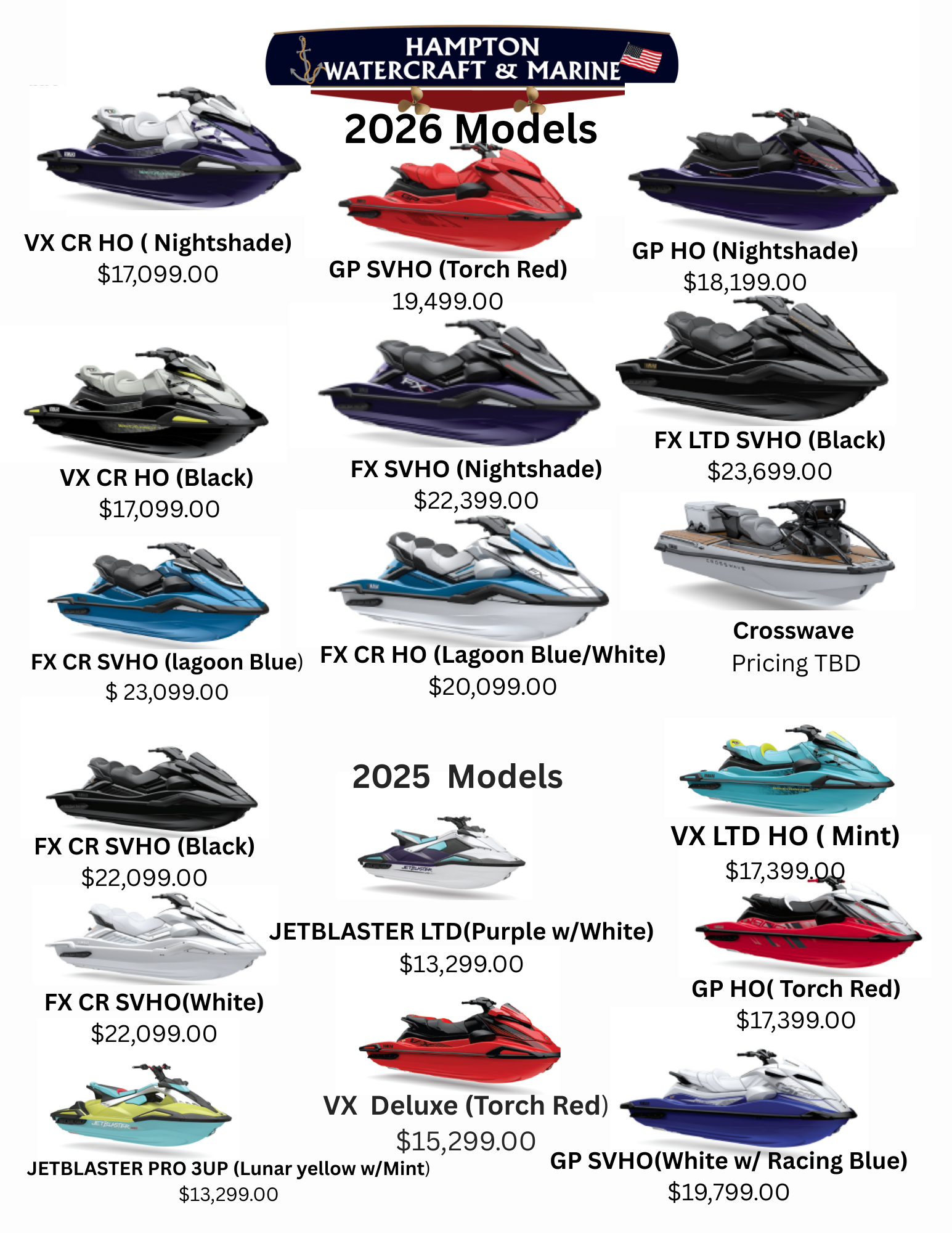Going Deep Sea Fishing
 Fishing in your local lake, river, or just off-shore is nice, but these locations have their limits. They can be a bit too relaxing, at times, so if you’re looking for more excitement or a specific kind of fish, going deeper is the way to go. Deep sea fishing off the Atlantic coast can be a thrill and very lucrative, whether you’re selling your catch, eating it, or releasing it. However, you’ll want to be prepared before you go.
Fishing in your local lake, river, or just off-shore is nice, but these locations have their limits. They can be a bit too relaxing, at times, so if you’re looking for more excitement or a specific kind of fish, going deeper is the way to go. Deep sea fishing off the Atlantic coast can be a thrill and very lucrative, whether you’re selling your catch, eating it, or releasing it. However, you’ll want to be prepared before you go.
Hampton Watercraft & Marine is here to help! We’ve put together a few tips to help you tackle the unique challenges that deep sea fishing can present. If you want to know more or you want to see the boats for sale on our lot, stop by our store in either Hampton Bays or Eastport, New York. Our friendly and knowledgeable staff will get you what you need at the prices you want!
The Right Gear
Your first step is to make sure you’re properly equipped for your trip. It’s always best to prepare for the worst just in case—if you don’t need some of these supplies, you’ll have brought along a few extra items, but if you do need them, you’ll be glad you took the time.
Warm as the Atlantic is, relatively, you’re still going to get cold out on the water. You’ll want to bring plenty of waterproof outerwear to keep you dry and warm. A poncho or raincoat over layered clothing will help you stay dry, and you can always remove layers as needed if you find yourself feeling a little too warm. Tall boots with wool socks will keep your feet toasty and dry as well. Always bring extra clothes just in case.
Make sure your boat is well-stocked as well. You’ll want food and water, sunscreen, a first aid kit, signal flares, a paper chart and compass (in case your GPS stops working), a hand-crank radio, and any other emergency equipment you can think of. If you’re going to be out overnight, make sure to stock up on extra food, blankets, pillows, and toiletries.
Find The Fish
Trolling a river, pond, or lake for fish is a much simpler matter than finding them in an ocean. Different ocean fish have different swimming patterns. Tuna, for instance, tend to swim with dolphins, so looking for pods of dolphins should help you find your target fish. Lighthouses, towers, and outcroppings of rock provide shelter and growing surfaces for all sorts of sea life, meaning there will be larger schools of fish swimming around them and in their nooks and crannies. You should also bring a fish finder in case these tips don’t help you quickly.
Proper Bait And Rods
Any experienced angler knows that different fish like different baits, so make sure you’ve got the right one for the fish you’re aiming for. For deep sea fish, that’s generally going to consist of minnows, shrimp, or squid. You’ll also want the right rods, reels, and tackle. Larger fish might require a heavy-duty baitcaster reel to help you rein them in. Circle hooks are great for deep sea fishing.
Safety
It’s always important to be safe and prepared for dangerous situations, and when you’re out at sea that goes double—triple if you’re going out by yourself. Ideally, make sure you have at least one other person with you to help out in a pinch.
Check on the weather forecast before you head out to avoid any storms. Heavy rain, thick fog, lightning, hail, and super cold temperatures are all dangerous and hardly conducive to fishing. If you do end up in a storm, head for shore immediately. Keep a radio on and nearby to keep up with weather updates to help you stay safe.
We hope these tips helped you prepare for your next, or first, deep sea outing! If you’re looking for more information, or you want to look at some boats that can handle ocean chop, stop on by Hampton Watercraft & Marine. We proudly serve Eastern Long Island, Hampton Bays, and Eastport, New York—let us serve you today!

